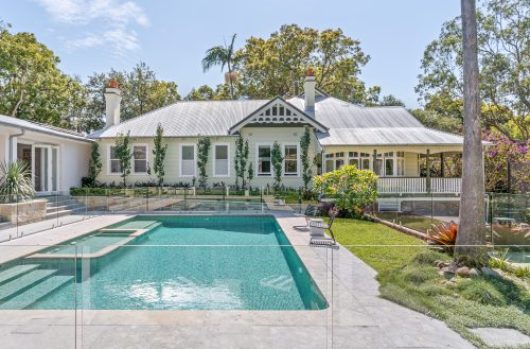Architecture: creating lifestyle value
Arguably as enduring as art, the histories of civilizations are immortalised through their architectural achievements. The earliest surviving texts about architecture quote its three core principles: firmitas, utilitas and venustas. That is, a building should be durable, with clear purpose and aesthetic beauty.
Yet strangely, new and one-off architectural homes often take their time to match with a buyer. When it comes to real estate, our regard for architectural statements can be equal parts fear and fascination. But when considered design balances with markets/location/lifestyle, perfect unions form between homes and buyers.
Take this Alex Popov-designed riverfront house in Hunters Hill, which sold for $3.85 million this year.


The well-known architect became a draw card for many buyers with more than 100 groups inspecting the property. In front of 60 people and 6 registered bidders, it found a new buyer after a campaign of just 5 weeks.
In the apartment market, appetites for well-thought-out design are becoming more apparent. Our inner-city environments test space and density, driving better architecture across broader price ranges, not just the top end.
Still if you ask local architects, there could be more focus on design innovation, and less on ideas to simply ‘sell more’ apartments or houses.
Sydney architect Anthony Gill says a worthy architectural home should be “everything you want it to be”.
“It should be beautiful with natural light and ventilation, and it should lift your spirits when you’re in there,” Anthony says.
“It should have a sense of space, both private and public. It should have boundaries between these spaces and blur those lines when you want them blurred.”
That’s the purpose of architectural builds and re-designs. They’re intended to extract the most from their site, orientation, location, and then over-deliver as a living experience.
They’re dreamed up to enrich lifestyle and make space more accommodating for the long term. Although they look the part, they’re more than a showpiece and, idealistically, not just an asset.
Hopefully their next owners can experience the lifestyle value these homes impart from being built/renovated for living, rather than for selling.
If you can’t see yourself in someone else’s creation, your own home could reveal hidden value from an architect-renovation. Instead of moving house, imagine using your space better.
Anthony Gill Architects are perhaps best known for reconfiguring this Potts Point studio into a comfortable environment for Anthony’s own young family in 2010. He took the space from being perfect for two people to being perfect for three.


“We loved it,” he says. “There was a certain richness to the way we lived back then that we wouldn’t have experienced had we been forced into a suburban home.”
At the time, the project resonated around the world. Then, when it came time to move on, one leasing agent commented, “you’d have more luck renting this studio if you put it back the way it was.”
Yet each time that studio hits the rental market, its perfectly matched to an adoring tenant.
“People have these notions about how they want to live. But they also have this level of concern,” Anthony says. “No owner will design a space without concern for the future, but homes that let us get the most from our lives now are so vital.”
Achieving a perfect architectural home can be more expensive, but in inner-Sydney suburbs, Anthony sees potential for lifestyle value to balance costs.
“For some people, a project might be about not moving to the suburbs,” he says. “If you love Surry Hills and could stay for another 5 years, then surely it’s worth it. If you skip the cost of buying to upgrade homes, you might afford that bigger family house 5 years sooner.”
With industry analysts and economic forecasters predicting further trends towards apartment living in Australia, hopefully this will come with cues from European cities where apartment culture is more sophisticated. If buyers expect more from their homes, developers will be forced to deliver more.
So in a house market that’s 99% project homes, perhaps more buyers will match with architect-designed homes, rather than dismiss them as quirky, unfitting or expensive.
And if a home has more firmitas, utilitas and venustas: durability, purpose and beauty, it might last you forever.



